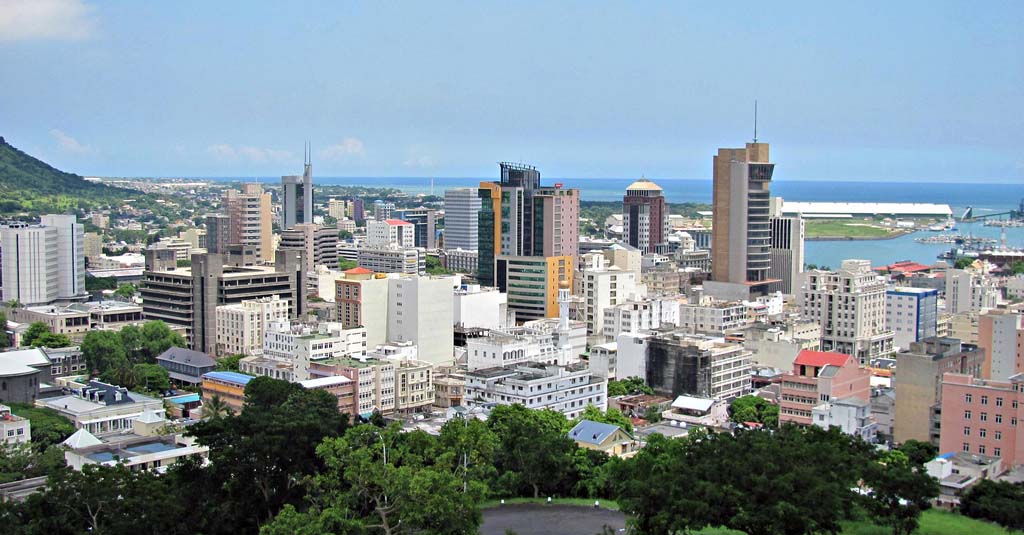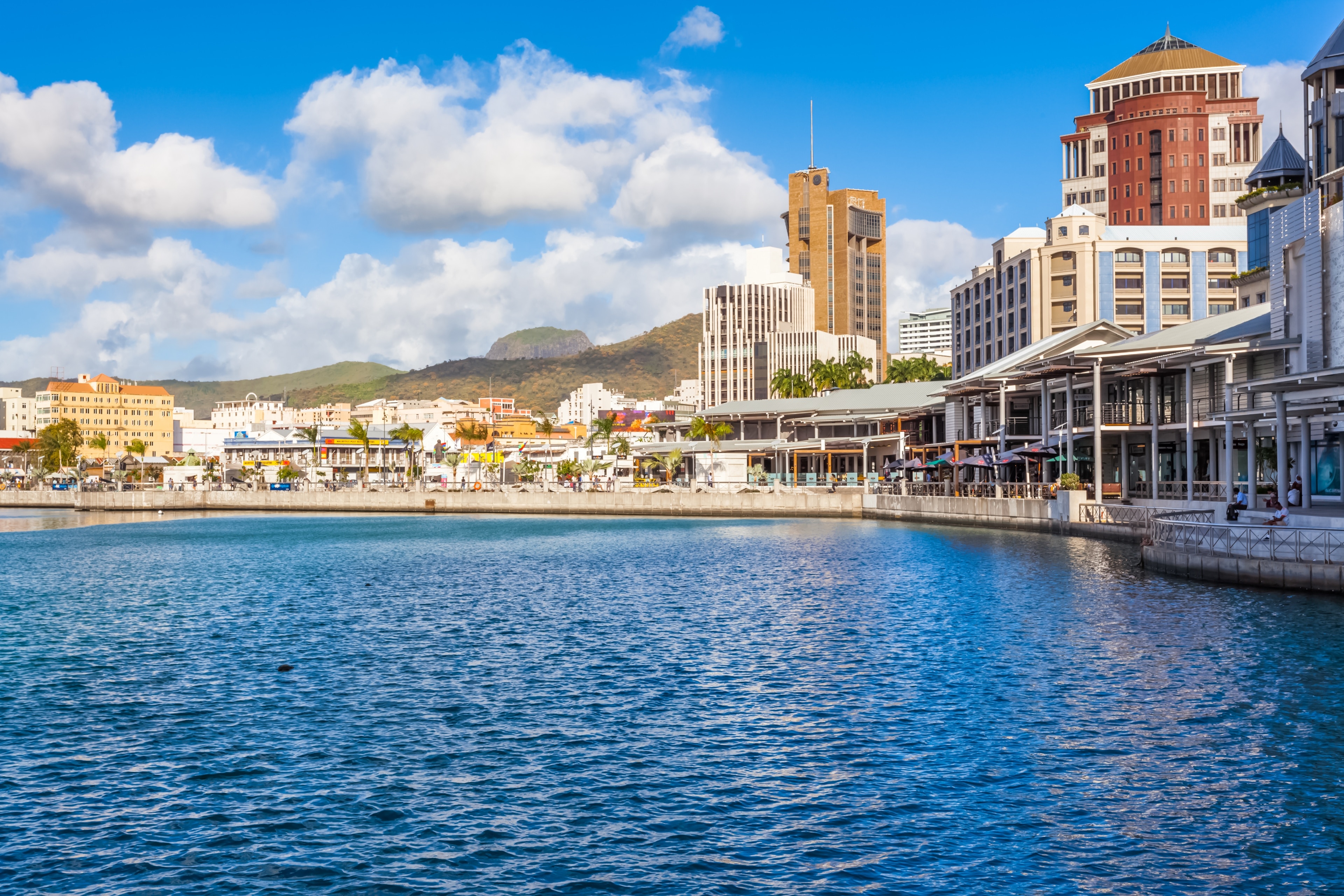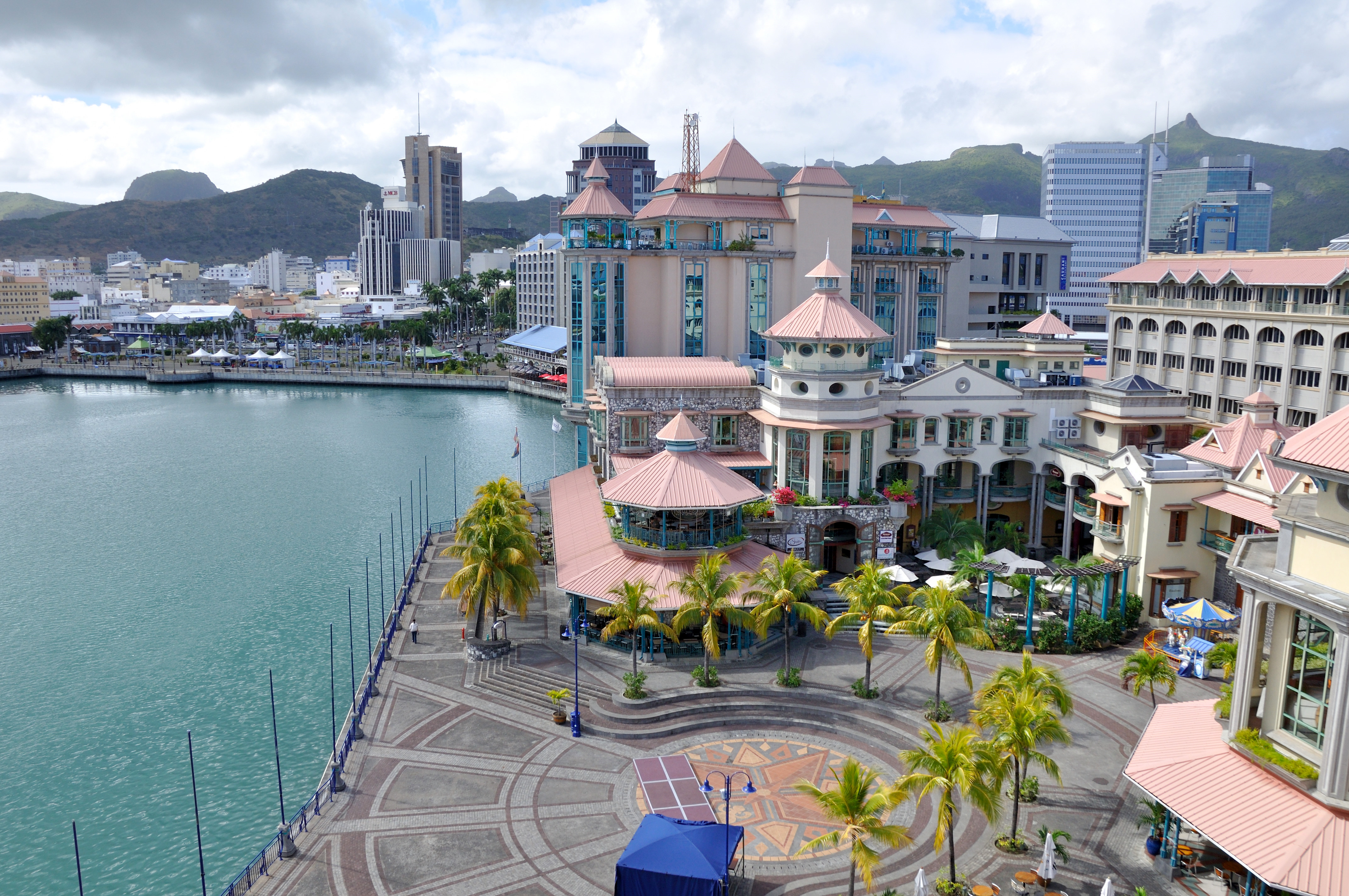Port Louis (French: Port-Louis; Mauritian Creole: Polwi or Porlwi, [poːlwi]) is the capital city of Mauritius. It is mainly located in the Port Louis District, with a small western part in the Black River District. Port Louis is the country's financial and political center and most populous city. It is administered by the Municipal City Council of Port Louis. According to the 2012 census conducted by Statistics Mauritius, the population was 147,066.
Port Louis was used as a harbor by the Dutch settlers from 1606 when they started to refer to the area as the Harbour of Tortoises. In 1736, under the French government, it became the administrative center of Mauritius and a major reprovisioning halt for French ships during their passage between Asia and Europe, around the Cape of Good Hope.
The Port is named in honor of King Louis XV. During this period of French colonization, Mauritius was known as Ile de France. The French governor at that time, Bertrand-François Mahé de La Bourdonnais, contributed to the development of the city. Since Port Louis was relatively well-protected from strong winds during cyclones by the Moka Mountain Range, Port Louis was selected to house both the main harbor and fort for the island. The value of the port continued during the British occupation of the island during the Napoleonic Wars (1800–15) and helped Britain control the Indian Ocean. However, port calls of ships fell drastically following the opening of the Suez Canal in 1869. Activity in the port increased during the seven-year closure of the Suez Canal (starting in 1967). Modernization of the port in the late 1970s has helped it maintain its role as the central point for all imports and exports from Mauritius. While Port Louis continues to be the business and administrative capital of Mauritius, expansion of the tourism industry in the late 1990s led to considerable development in Port Louis, with many shops, hotels, and restaurants being built in the Caudan Waterfront area.
Raouf Oderuth, the Mauritian Artist provides a 1930s scene depicting the waterfront when motorized transportation hardly existed. Place D’Armes is still recognizable despite high-rise buildings, heavy traffic jams, and crowds of pedestrians.
Port Louis, is the city, capital, and main port of the island of Mauritius in the western Indian Ocean. It lies between a well-sheltered, deepwater harbor, accessible to ships through a break in the coral reef, and a semicircle of mountains.
Port Louis was founded about 1736 by the French as a calling place for ships rounding the Cape of Good Hope (South Africa) on the passage between Asia and Europe. British occupation of the island during the Napoleonic Wars (1800–15) was a strategic factor in securing control of the Indian Ocean, but the opening of the Suez Canal in 1869 resulted in the port being bypassed by shipping. Port activity increased during the closure of the Suez Canal (1967–75), and the harbor was modernized in the late 1970s. The city is the central collecting and clearing point for all imports and exports from Mauritius and its dependencies and is connected by road to the rest of the island. Sugar exports, once the mainstay of the economy, have been superseded in importance by manufacturing (notably textiles) and services (notably tourism).
The city is dominated by an old fortress, the Citadel (1838), built on a hill almost in the center. A small racecourse is located on the eastern side. Port Louis possesses Anglican and Roman Catholic cathedrals, a natural history museum and an art gallery, several libraries, educational institutions, publishers, research institutes, government offices, and the colonial-era Government House. In the late 1990s, there was considerable development in Port Louis, including the addition of shops, restaurants, entertainment venues, and lodging in the city’s Caudan Waterfront area. Nearby is Aapravasi Ghat, an immigration depot used from 1849 to 1923 and the site where the modern indentured labor system was begun by the British government in 1834; it was designated a UNESCO World Heritage site in 2006. The University of Mauritius (1965) and the Sugar Industry Research Institute (1953) are at Réduit, just south of Port Louis. Pop. (2000) 144,303; (2011) 149,226.
GALLERY






